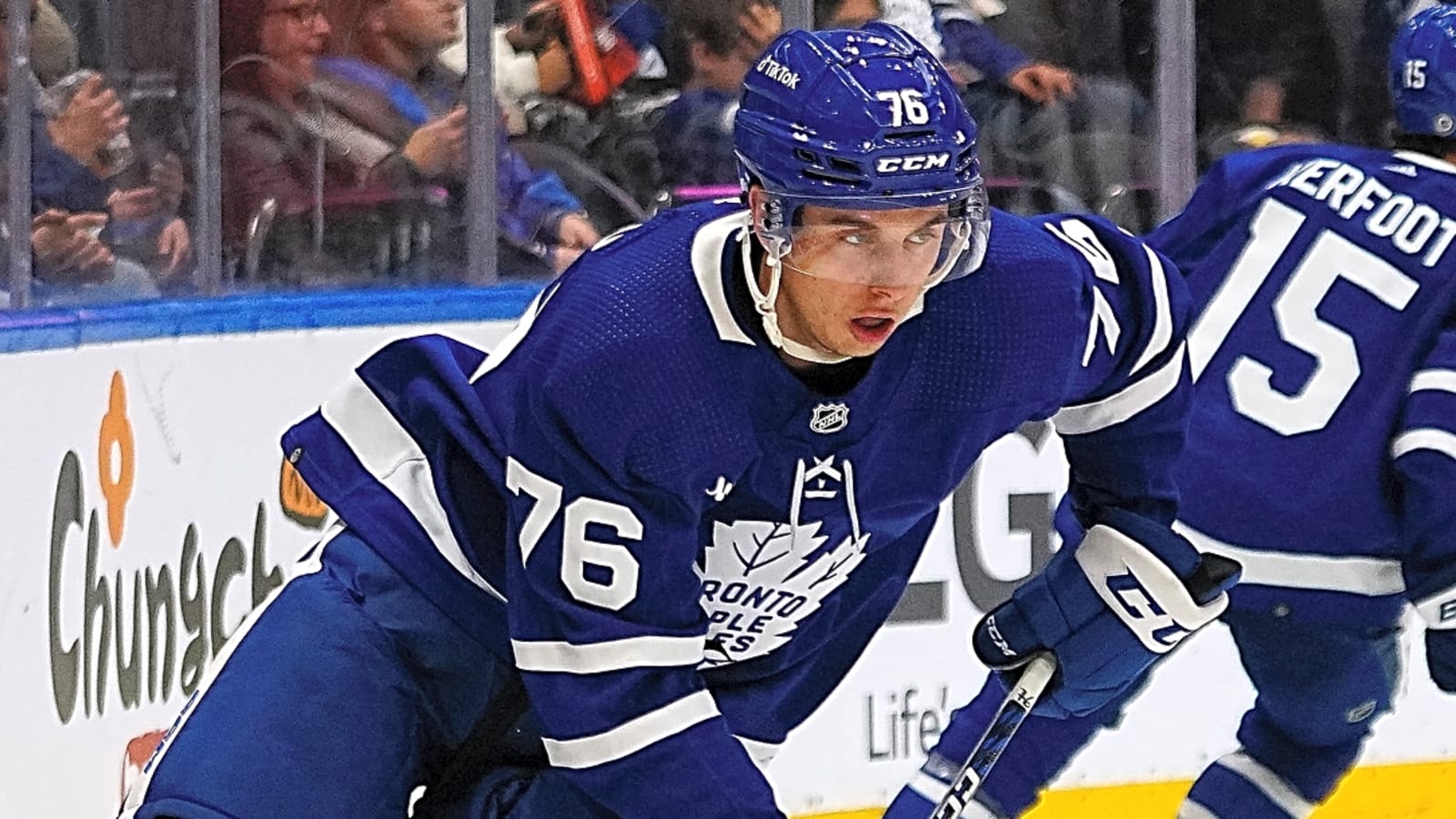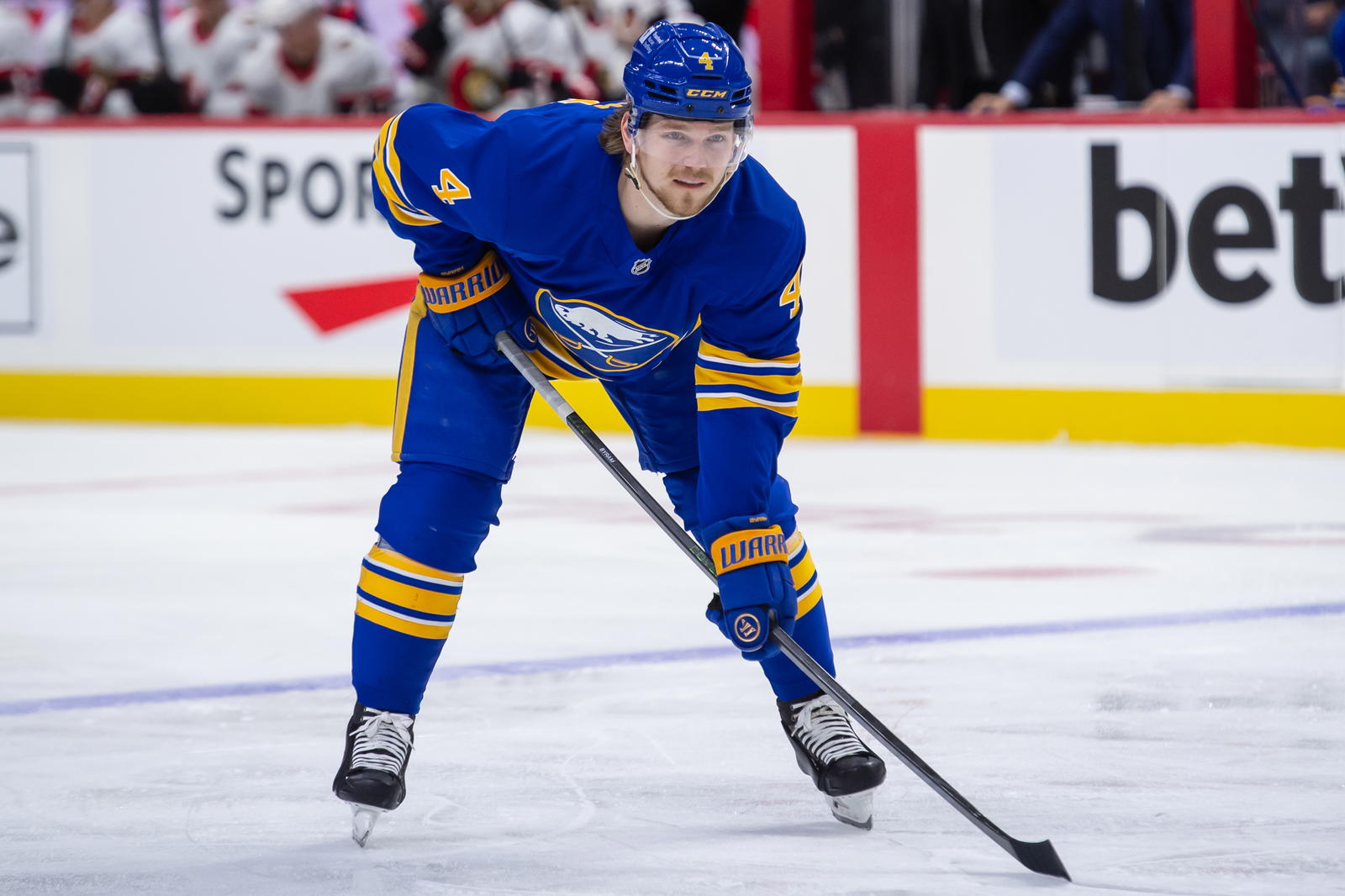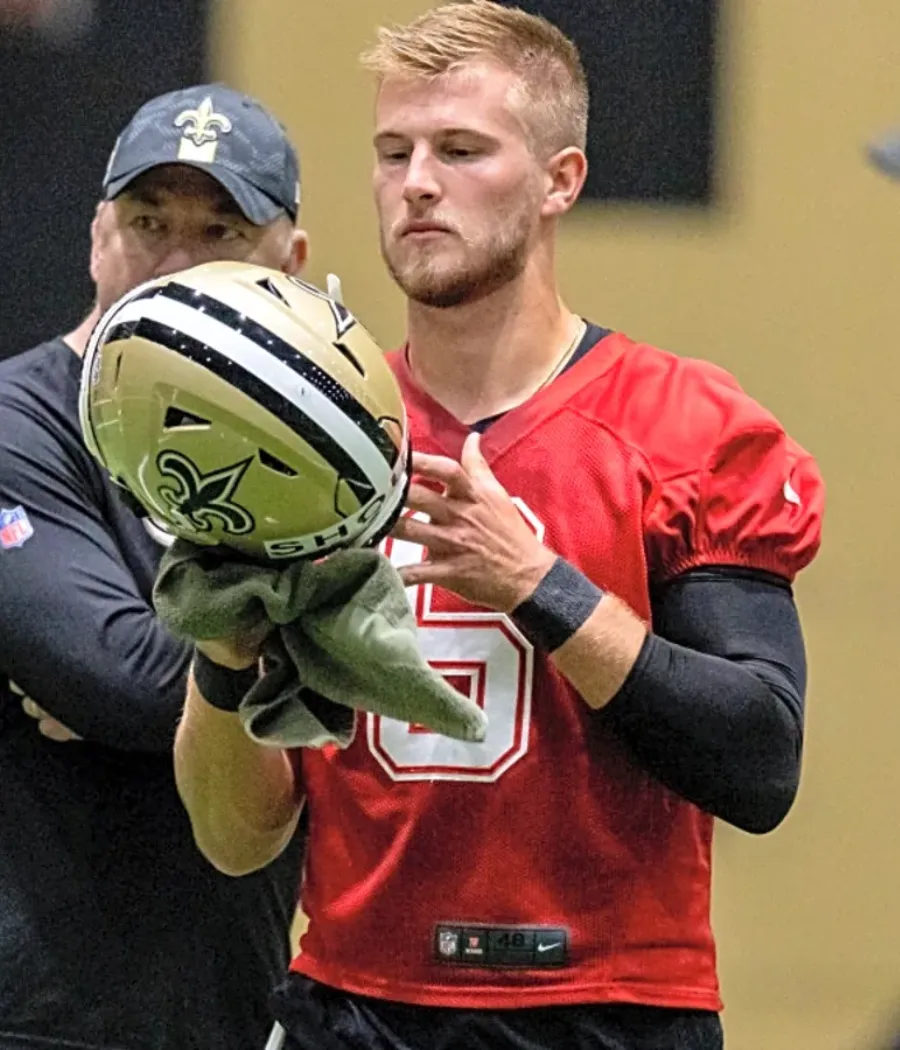
Since GM Brad Treliving has taken over, it is clear that he has tried to overhaul the Leafs’ blueline in his image. There is a natural churn to an NHL roster or prospect pipeline, but Treliving has clearly made size and defensive focus a priority. As such, several players have been added, just as several others have been moved on from.
Perhaps, then, it is somewhat surprising to see that William Villeneuve remains with the team, moreover, has been rising up the depth chart. Inked to a new contract, let’s take a closer look at Villeneuve and how he fits into the Leafs’ system as a whole.
Villeneuve’s profile
A 6’2 right shot, Villeneuve’s game has long been about cerebral offence more than anything else. After showing enough promise to get drafted, it seemed Villeneuve had stagnated heading into last season. Combined with some skating issues and a lack of overt physicality, Villeneuve’s lack of production dropped him out of the public consciousness.
All that seemed to change last season, cemented by some of the Leafs’ offseason moves as well. Much of Villeneuve’s production increase was due to him overtaking Topi Niemela as the Toronto Marlies’ top power play option. Still, it seems that there have been some improvements to his defensive play over the years, rounding out his overall game now entering his age-23 season.
At the time he was drafted, Villeneuve did have some believers, though those hopes have dwindled over the years. For many NHL-focused Leaf fans, Villeneuve might continue to be overlooked altogether. A high-end contributor seems out of the question, though his progress should not be entirely dismissed. While most high end players develop at a certain rate or a certain time, others are able to develop into their mid 20s to become effective role players.
NHL fit
The Leafs have moved on from Niemela, who signed a one-year deal in the SHL, eroding their talent of puck-moving right shots even further. Both Timothy Liljegren and Conor Timmins were moved off last season. The logjam of competition above Villeneuve has thinned considerably since last offseason.
As it stands, the Leafs have rebuilt their blueline to a much more balanced degree. The group boasts a lot of defensive defencemen, which is clearly their preference. The main group of seven has four left shots and three right shots. Chris Tanev, Brandon Carlo, and Philippe Myers are those right shots, and it seems very unlikely that Villeneuve will challenge for their spots outright.
Instead, Villeneuve provides a different element than the right shots ahead of him on the depth chart; if the Leafs run into injury trouble, Villeneuve could earn some consideration for a call-up. In essence, the Leafs would need to be missing one of their right-shot defencemen, as well as one of their puck-moving left shots, Morgan Rielly or Oliver Ekman-Larsson, to create the parameters for a Villeneuve call-up.
If a left-shot call-up is needed, or a call-up with a more defensive focus, Villeneuve will not be part of the solution. The Leafs’ depth on the left side is far more pronounced with the likes of Marshall Rifai, Dakota Mermis, and Cade Webber as call-up candidates. Villeneuve’s competition on the right side is Matt Benning, a smaller but more defensive veteran with NHL experience. If Villeneuve can impress, perhaps a prospective fit alongside Simon Benoit, or perhaps sheer curiosity, might give him a leg up over Benning.
Organizational fit
A holdover from a past regime, Villeneuve’s one-year contract might be as long as he remains relevant within the organization. While the Leafs have a growing number of defencemen acquired by Treliving who could push him out in the coming years, the truth is that there is not much immediate help on the horizon.
On the right side, only Benning is relevant to an NHL call-up. Ben Danford might be highly touted, perhaps even in line to make Canada’s U20 World Junior team this winter, but remains years away. Recent draftee Ryan Fellinger is even further away. Offensively, left shots Noah Chadwick and Victor Johansson seem quite promising, but are further away as well. Henry Thrun, a recently acquired left-shot, has a lot more experience than Villeneuve and is only about a year older.
Bottom line
Though Villeneuve is unlikely to appear in NHL games, he is an important fail-safe within the Leafs organization. An NHL season is a battle of attrition, and having an option like Villeneuve fills a bit of a blind spot for the Leafs. Entering the season as the Marlies’ top power play option will give him a chance to build on his career highs, though he will need to show continued growth in his skating and defending to make headway.
-1749877029-q80.webp)

